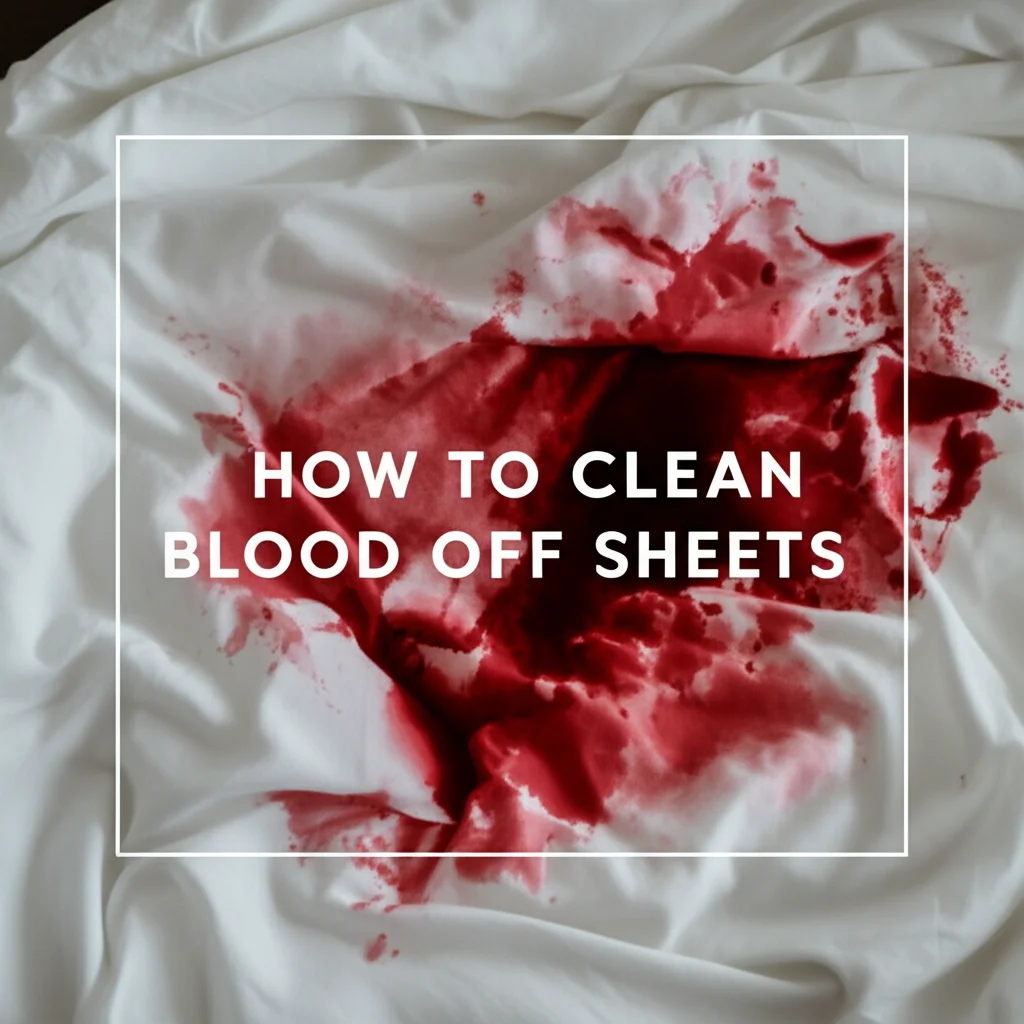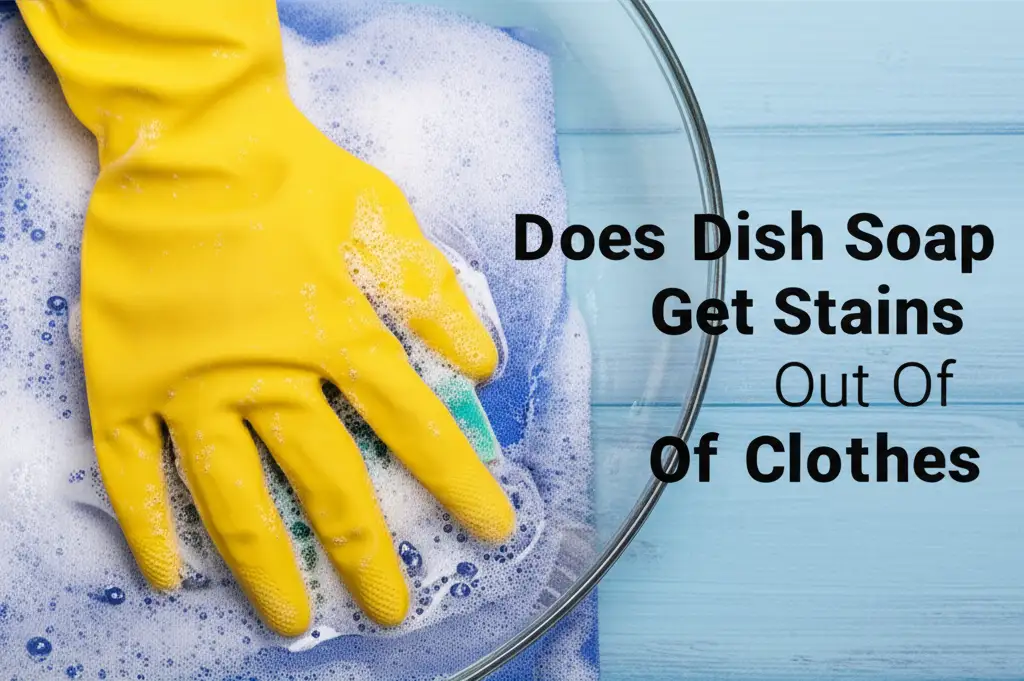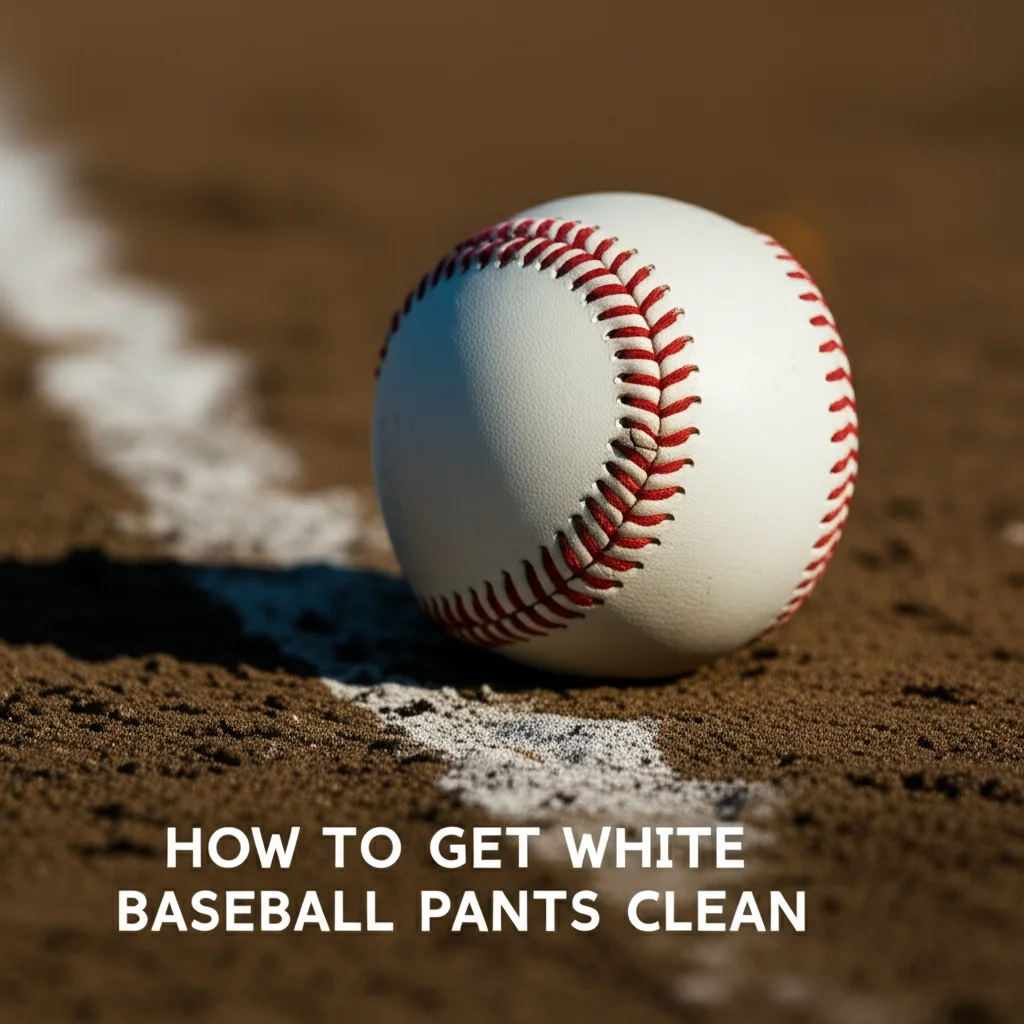· Todd Martin · Laundry & Stain Removal · 18 min read
How To Clean Blood Off Sheets

Expert Tips: How to Clean Blood Off Sheets Effectively
Waking up to a blood stain on your sheets can be a real hassle. It is not something anyone wants to see. Whether it’s a small cut, an unexpected nosebleed, or menstrual leakage, these stains seem to cling stubbornly to fabric. Knowing how to clean blood off sheets effectively is a crucial home skill. We all want our bedding to look and feel fresh.
This guide will walk you through proven methods for removing blood stains. We will cover everything from fresh spills to old, dried-on marks. You will learn about common household items and specialized cleaners. We will also discuss techniques for different fabric types. By the end, you will have all the knowledge to restore your sheets to their pristine condition. I will share my best tips to help you keep your bed clean and inviting.
Takeaway:
- Act immediately when you see a fresh blood stain.
- Always use cold water for blood stains.
- Avoid hot water and heat until the stain is completely gone.
- Hydrogen peroxide is powerful for fresh blood on white or light-colored sheets.
- Enzyme cleaners are best for dried blood stains.
Main Query Answer:
To clean blood off sheets, act quickly by rinsing the stained area with cold water. For fresh stains, apply hydrogen peroxide or a salt paste, then gently blot. For dried stains, pre-soak in cold water with an enzyme cleaner before washing with cold water and detergent. Avoid hot water or drying until the stain is gone.
Immediate Action: The Golden Rule for Fresh Blood Stains
The moment you notice a fresh blood stain on your sheets, time is your biggest ally. Blood, like many organic stains, sets quickly into fabric fibers. The faster you act, the easier the removal process becomes. I always tell people that immediacy is key here. Do not delay, even for a few minutes.
When a blood stain is fresh, the blood has not yet bonded strongly with the fabric. The liquid nature of fresh blood allows it to be more easily flushed away. It has not undergone any chemical changes that make it harder to remove. This is why a quick response significantly increases your success rate. Thinking of a blood stain on a wall, you would also want to address it fast before it dries. The same principle applies here. Learn more about cleaning blood off walls to understand the importance of speed on different surfaces.
Immediate Steps for Wet Blood
First, remove the sheets from the bed. Do not let the blood spread to other areas of the bedding or mattress. Gently blot the excess blood using a clean cloth or paper towel. Do not rub the stain, as this can push the blood deeper into the fibers. You want to lift the blood, not spread it around.
Once you have blotted the excess, take the sheet directly to a sink. Turn the stained area upside down under a stream of cold running water. The water pressure helps push the blood out of the fabric. Keep the water cold, never warm or hot.
Why Cold Water is Essential
Using cold water for blood stains is a non-negotiable rule. Hot water cooks the proteins in the blood. This causes the blood to coagulate and permanently bond with the fabric fibers. Once this happens, the stain becomes incredibly difficult, if not impossible, to remove. Think of it like cooking an egg – once the proteins are heated, they change structure forever.
Cold water, on the other hand, helps to keep the blood liquid. It allows the blood to dissolve and flush out of the fabric. Always start with cold water. Even if you later use a stain remover, the initial cold rinse is vital. This first step sets you up for success in cleaning blood off sheets.
Effective Home Remedies for Blood Stain Removal
After the initial cold water rinse, you might still see a faint mark. This is when common household products come to the rescue. Many items you already have can be incredibly effective at lifting blood stains. I have personally used these methods countless times, and they really work. They are great alternatives to commercial stain removers.
These remedies work by breaking down the proteins in the blood. Some act as mild bleaches, while others help lift the stain through absorption. It is important to remember to test any new product on an inconspicuous area of your sheet first. This prevents accidental damage or discoloration. Always apply the solution to the stain, not the whole sheet, unless otherwise directed.
Hydrogen Peroxide Power
Hydrogen peroxide is a superhero for fresh blood stains, especially on white or light-colored sheets. It works by creating oxygen bubbles that lift the blood from the fabric. I find it very effective. You can pour a small amount directly onto the stain. Watch as it starts to fizz and bubble.
Let it sit for a few minutes. Then, blot the area with a clean cloth. You might need to repeat this process a few times for stubborn stains. Always rinse thoroughly with cold water after each application. Be cautious with colored sheets, as hydrogen peroxide can cause fading.
Salt and Cold Water Paste
A simple paste made from salt and cold water is another excellent option. Salt is a natural abrasive and desiccant. It helps draw the blood out of the fabric. Mix a generous amount of salt with a small amount of cold water to form a thick paste. The consistency should be like toothpaste.
Apply this paste generously over the blood stain. Gently rub it into the fabric using your fingers or a soft brush. Let the paste sit for 10-15 minutes, allowing the salt to work its magic. Then, rinse the area thoroughly with cold water. This method is particularly good for delicate fabrics where harsh chemicals are not suitable.
Dish Soap and Ammonia Mix
For tougher stains on sturdy fabrics, a mixture of dish soap and ammonia can be effective. Dish soap breaks down the fats and proteins in the blood. Ammonia adds extra cleaning power. Mix one tablespoon of dish soap with two tablespoons of ammonia in a small bowl. Use only a few drops of this mixture on the stain.
Dab the solution onto the stain with a clean cloth. Let it sit for about 10-15 minutes. Then, gently rub the area with your fingers or a soft brush. Rinse thoroughly with cold water. Always work in a well-ventilated area when using ammonia. Never mix ammonia with bleach, as this creates dangerous fumes. This method is similar to how you might approach stains on a mattress. Understanding how to clean stains from a mattress can provide similar insights for fabric care. For more on removing tough fabric stains, check out our guide on how to clean stains from a mattress.
Conquering Dried Blood Stains on Bed Sheets
Dried blood stains present a greater challenge than fresh ones, but they are not impossible to remove. When blood dries, its proteins bond more firmly to the fabric fibers. This requires a bit more patience and a different approach. I have dealt with many dried stains, and I know the key is persistence. Do not give up if the first attempt does not completely work.
The goal with dried stains is to re-hydrate the blood. This helps to loosen its grip on the fabric. Once re-hydrated, the methods for fresh stains become more effective. It is a two-step process that often yields great results. Remember, the fabric type of your sheets will influence the aggressiveness of your cleaning method.
Pre-Soaking is Key
The first and most crucial step for dried blood stains is pre-soaking. Place the stained portion of the sheet into a basin or tub filled with cold water. Make sure the entire stained area is submerged. You can add a few drops of laundry detergent or an enzyme cleaner to the water. This helps to start breaking down the stain.
Let the sheet soak for several hours, or even overnight. This long soak gives the dried blood time to soften and re-liquefy. I often check it periodically and gently agitate the water. This helps to loosen the stain even more. After soaking, gently blot the stain again.
Enzyme Cleaners: Your Best Friend
Enzyme cleaners are specifically designed to break down organic stains like blood, sweat, urine, and food. They contain special enzymes that “eat away” at the proteins in the blood. These cleaners are highly effective on dried blood stains. You can find them in laundry aisles or pet supply stores.
After pre-soaking, apply the enzyme cleaner directly to the remaining stain. Follow the product instructions for application and dwell time. Many recommend letting it sit for 30 minutes to an hour. Gently work the cleaner into the fabric with a soft brush or your fingers. Then, rinse thoroughly with cold water. Repeat if necessary. Enzyme cleaners are powerful tools for tough organic marks. Think of them like specialized tools for specific jobs, much like you might approach cleaning stubborn stains off other surfaces. Learning how to clean blood off concrete, for instance, also involves breaking down stubborn matter. Find out more about tough stain removal methods here: how to clean blood off concrete.
Stubborn Stains: Gentle Scraping
Sometimes, dried blood forms a thick, crusty layer on the fabric surface. For these very stubborn stains, you might need to gently scrape away the excess. Use a blunt object like the edge of a credit card or a dull knife. Carefully scrape the dried blood off the surface. Always work away from the stain’s center.
Be extremely careful not to damage the fabric fibers. This step helps remove the bulk of the dried blood. It allows your pre-soak and enzyme cleaner to penetrate more effectively. After scraping, proceed with the pre-soaking and enzyme cleaner steps. This combination of physical removal and chemical action is often what it takes to completely conquer an old blood stain.
Natural and Gentle Approaches to Blood Stains
For those who prefer eco-friendly solutions or have sensitivities to harsh chemicals, natural remedies offer excellent alternatives. These methods often use common pantry items. They are gentle on fabrics and safe for the environment. I often turn to these options first for most stains. They prove that you do not always need strong cleaners to get the job done.
These natural ingredients work by creating an environment that breaks down blood proteins or absorbs the stain. They are perfect for routine stain removal or for delicate sheets. While they might require a bit more patience, their effectiveness is undeniable. Plus, they leave your sheets smelling fresh without any chemical residue.
White Vinegar Magic
White vinegar is a versatile cleaning agent, and it works wonders on blood stains. Its mild acidity helps to break down the blood proteins. It is also a natural deodorizer. I often reach for vinegar for many cleaning tasks around the house. It’s a staple in my cleaning caddy.
To use white vinegar, pour it directly onto the fresh or pre-soaked dried blood stain. Let it sit for about 10-15 minutes. Then, gently blot the area with a clean cloth. You will see the stain starting to lift. Rinse the sheet thoroughly with cold water. If the stain persists, you can repeat the process. White vinegar is also great for maintaining your washing machine. Discover more uses for vinegar in your laundry routine, like how to clean your washer with vinegar.
Baking Soda Power
Baking soda is another natural powerhouse for stain removal. It is a mild abrasive and a natural absorbent. This makes it effective at drawing stains out of fabric. I find it especially useful for newer, less set-in blood marks. It’s a gentle yet effective solution.
Create a thick paste by mixing baking soda with a small amount of cold water. Apply this paste generously over the blood stain. Allow the paste to dry completely on the fabric. This process can take a few hours. As it dries, the baking soda absorbs the blood. Once dry, gently brush off the hardened paste. Then, rinse the sheet with cold water. This method is safe for most fabrics and colors.
Lemon Juice and Sunlight (for White Sheets)
For white sheets with stubborn blood stains, lemon juice can act as a natural bleach. The citric acid in lemon juice, combined with sunlight, has a powerful lightening effect. This is a great natural alternative to chemical bleaches. However, it should only be used on white fabrics.
Squeeze fresh lemon juice directly onto the stain. Then, lay the sheet out in direct sunlight. Let it sit for several hours. The sun’s UV rays will activate the lemon juice and help fade the stain. Keep an eye on it to ensure it does not dry out completely. After sun exposure, rinse the sheet thoroughly with cold water. This method might require patience and multiple repetitions for older, set-in stains.
Caring for Different Fabrics: Silk, Cotton, and Colors
Sheets come in a variety of materials, and each material responds differently to cleaning agents. What works wonders on sturdy cotton might damage delicate silk. Understanding your sheet’s fabric composition is essential before tackling a blood stain. I always check the care label first. This simple step prevents accidental harm to your favorite bedding.
Different dyes also react uniquely to stain removers. Bleach, for example, is great for white cotton but disastrous for colored or delicate fabrics. Tailoring your approach to the specific fabric and color ensures effective stain removal without compromising the sheet’s integrity. Always remember the “test in an inconspicuous area” rule.
Delicate Fabrics (Silk, Satin, Linen)
Silk and satin sheets require a very gentle touch. These luxurious fabrics can easily be damaged by harsh chemicals, vigorous rubbing, or hot water. For blood stains on silk or satin, immediacy is even more critical. I recommend using the salt and cold water paste method or a diluted enzyme cleaner.
Gently blot the stain; do not rub or scrub. Rinse with cold water. Avoid hydrogen peroxide or bleach, as these can easily discolor or weaken delicate fibers. If using an enzyme cleaner, dilute it more than usual and test it first. After treatment, hand wash the delicate item in cold water with a mild detergent. Air dry away from direct sunlight. Treating these fabrics is similar to how you would approach caring for mold on clothes, where gentleness and specific solutions are key. Explore gentle fabric care methods with our guide on how to clean mold on clothes.
Dark vs. White Sheets
The color of your sheets significantly influences your stain removal options.
- White Sheets: You have the most flexibility with white sheets. Hydrogen peroxide is excellent for fresh stains. For stubborn marks, you can consider using a diluted bleach solution as a last resort. Always dilute bleach and apply it carefully. Rinse very well. Bleach works by breaking down pigments, and it can be harsh. Using bleach for cleaning certain areas like your shower also requires careful handling and proper ventilation. For more on safe bleach use, see our article on how to clean shower with bleach.
- Colored Sheets: Hydrogen peroxide and bleach are generally not recommended for colored sheets. They can cause permanent discoloration or spot bleaching. Stick to cold water, salt paste, baking soda paste, or enzyme cleaners. Always test these remedies on a hidden spot first to ensure they do not affect the color.
Stain Removers for Specific Fabrics
Some commercial stain removers are formulated for specific fabric types. If you have specialty sheets, look for products designed for them. Read labels carefully. For example, some products are specifically for delicates or color-safe applications. These provide a tailored solution. Choosing the right product can make a big difference in preserving your sheets.
Washing and Drying: Final Steps for Stain-Free Sheets
After you have pre-treated and treated the blood stain, the final step is washing the sheets. This step is crucial to ensure the stain is completely gone and the sheets are clean. It is important to wash correctly and avoid common mistakes that can set the stain. I always double-check the stain before the sheets go into the dryer.
The drying process is just as important as the washing. Heat from a dryer can permanently set any remaining traces of the stain. This is why vigilance at this stage is so vital. We want clean, stain-free sheets coming out, every time.
Proper Washing Cycle
Once you have pre-treated the blood stain and applied your chosen remedy, it is time to machine wash the sheets. Place the stained sheets into the washing machine by themselves or with other similar items. Use a cold water cycle. Do not use warm or hot water, as any residual blood can set.
Add your regular laundry detergent. You can also add a scoop of an oxygen-based bleach (color-safe bleach) to the wash for an extra boost. This is safe for most colored fabrics. Avoid chlorine bleach unless your sheets are white and you have tested it. Ensure the washing machine is not overloaded. This allows the sheets to move freely and get thoroughly cleaned.
Drying the Sheets
After the wash cycle finishes, take the sheets out of the machine. Inspect the formerly stained area very carefully. Hold the sheet up to a good light source. Check from both sides of the fabric. If you see even the slightest hint of a blood stain remaining, do not put the sheets in the dryer.
If a stain is still present, repeat the pre-treatment process. Go back to applying your chosen stain remover and re-wash in cold water. You must be certain the stain is completely gone before drying. Heat from the dryer will bake any remaining blood into the fabric. This makes it virtually impossible to remove later. Once the stain is gone, you can dry your sheets as usual, following the care label instructions. This cautious approach is similar to how you would handle paint stains on clothes – you wouldn’t dry them until the paint is completely gone. For more tips on removing stubborn stains from clothing, see how to clean paint from clothes.
Preventing Future Stains (and Quick Clean-ups)
While accidents happen, there are ways to minimize future blood stains on your sheets. Using mattress protectors can add a layer of defense against any spills that soak through the sheets. For regular prevention, consider using period-proof underwear or specialized bedding for menstrual cycles. Quick response is always the best prevention against a permanent stain.
Keep a small spray bottle with cold water or a diluted hydrogen peroxide solution near your bed. This allows for immediate spot treatment of fresh blood stains. A quick spray and blot can save you a lot of effort later. Always have clean cloths readily available. Being prepared makes cleaning blood off sheets much easier.
FAQ Section
How do you get old, dried blood out of sheets?
To remove old, dried blood from sheets, start by pre-soaking the stained area in cold water for several hours, or even overnight. This re-hydrates the blood. Then, apply an enzyme-based stain cleaner directly to the stain. Let it sit for the recommended time, usually 30 minutes to an hour. Gently work the product into the fabric before washing the sheet in cold water with your regular detergent.
Can hydrogen peroxide remove dried blood from sheets?
Hydrogen peroxide is most effective on fresh blood stains. For dried blood, it might require repeated applications after a thorough cold water pre-soak. The pre-soak helps to re-hydrate the blood, allowing the peroxide to penetrate and lift the stain more effectively. Test hydrogen peroxide on an inconspicuous area first, especially on colored sheets, as it can cause bleaching.
What is the best household item to remove blood stains?
The best household item for blood stains depends on whether the stain is fresh or dried. For fresh stains, cold water is paramount, followed by hydrogen peroxide (for white sheets) or a paste of salt and cold water. For dried stains, a cold water pre-soak combined with an enzyme cleaner (like those found in laundry boosters) is highly effective. Dish soap can also assist in breaking down the stain.
Will vinegar remove blood stains from sheets?
Yes, white vinegar can help remove blood stains from sheets, especially fresh ones. Its mild acidity works to break down the blood’s proteins. Pour undiluted white vinegar directly onto the stain and let it sit for about 10-15 minutes. Then, blot and rinse with cold water. For stubborn or dried stains, you might need to repeat the process or combine it with a pre-soak.
Does baking soda get blood out of sheets?
Yes, baking soda can be an effective natural remedy for blood stains. Make a thick paste with baking soda and cold water. Apply this paste generously over the blood stain. Let it dry completely on the fabric. As it dries, the baking soda absorbs the stain. Once dry, gently brush off the paste, then rinse the sheet with cold water. This method is safe for most fabric types and colors.
Conclusion
Dealing with blood stains on sheets can feel daunting, but it is a manageable task with the right knowledge and tools. Remember, speed is your greatest ally when facing fresh blood. Always reach for cold water first. This single action prevents the stain from setting permanently. For those stubborn, dried marks, patience and a good enzyme cleaner are key.
Whether you choose common household remedies like hydrogen peroxide or salt, or prefer natural solutions like vinegar and baking soda, success is within reach. Always consider your fabric type and color. Delicate fabrics and colored sheets require a gentler touch. By following these steps, you can confidently restore your bedding to its clean, inviting state. A clean bed means a better night’s rest. Take pride in knowing how to keep your sleep sanctuary spotless.





